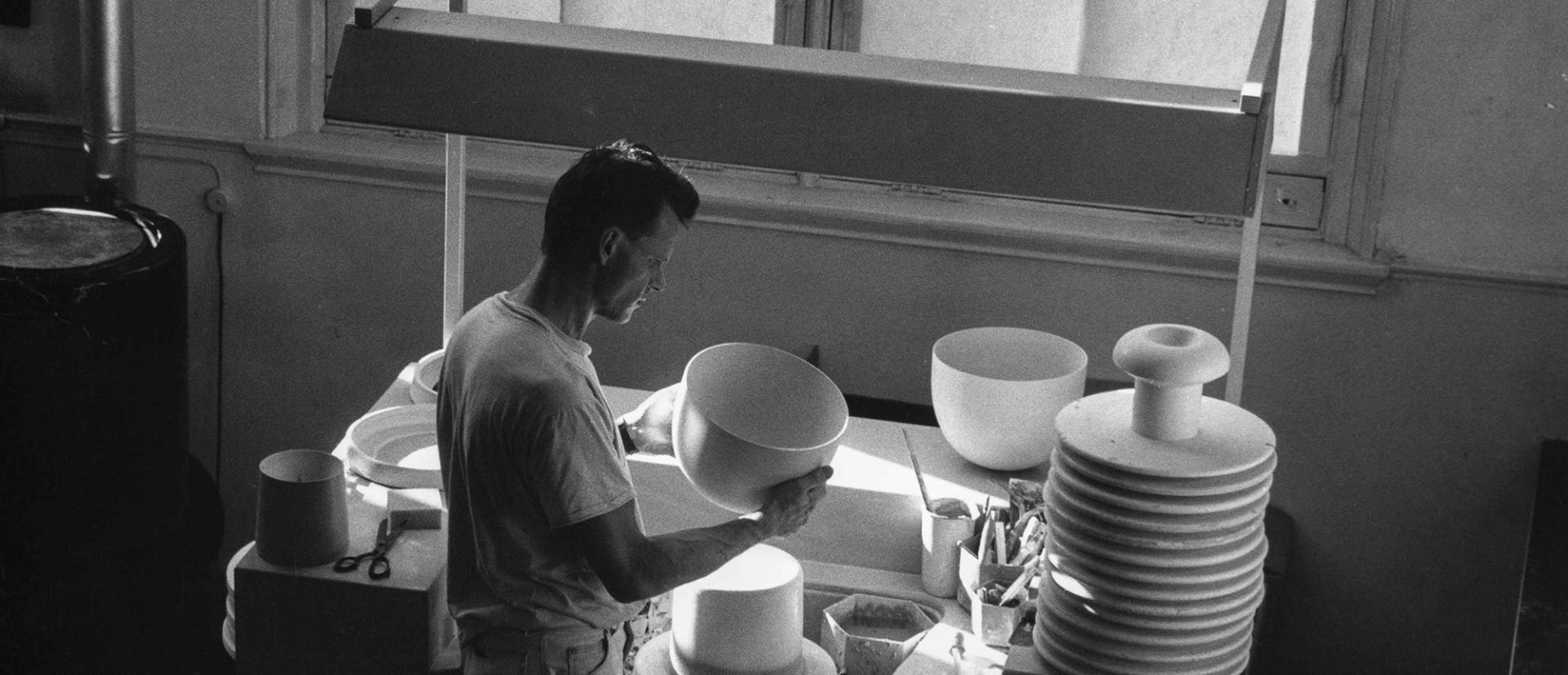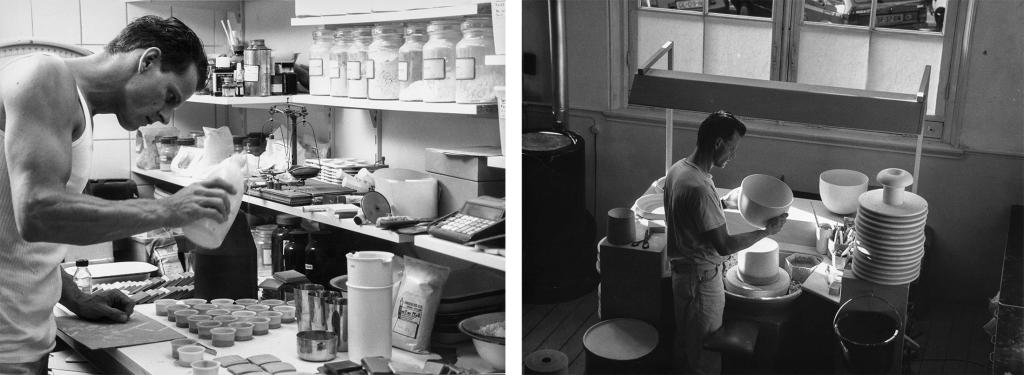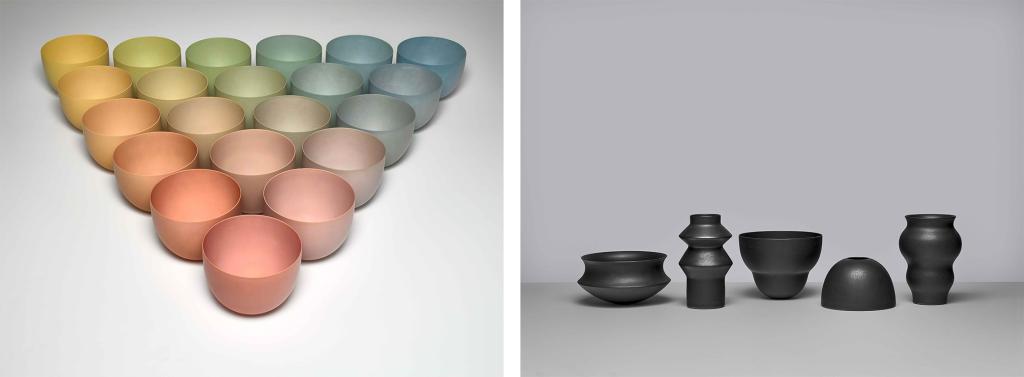Geert Lap Archive

The RKD recently acquired the archive of the ceramic artist Geert Lap who died in 2017 and is known for geometric abstract ceramic work in monochrome. His archive consists of correspondence, documentation about his training and his career as an artist, as well as information about his way of working with design drawings and his recipes for glazes.
Ceramics
Trained at the Gerrit Rietveld Academie, Geert Lap (1951-2017) soon established a unique position for himself within the world of ceramics. His vases, plates and bowls are paper thin and his forms are created with great precision. They look as though they are mass-produced, but are all made on the potter’s wheel. Geert Lap’s early work is in porcelain, and monochrome glazed in one of the three primary colours, or in black or grey. He left the foot and rim unglazed, in order to show the white of the porcelain. From the middle of the 1980s Lap worked in stoneware: this meant that he could throw larger forms. The colours he used became richer – still monochrome – and were given names such as baby nail, pistache or mist.

The national and international art scene
Geert Lap’s work was innovative, and he achieved fame even early in his career. The Museum Fodor showed his work soon after he graduated in 1979 and more offers from museums and galleries followed. When it was shown in his degree show at the Gerrit Rietveld Academie, Geert Lap’s work came under the eye of the designer and art collector Benno Premsela. In the ensuing years Premsela would become an important collector and promoter of Lap’s work, and he introduced Lap to his contacts in the United States. Although he was hesitant at first, the American ceramics expert and gallery owner Garth Clark, who was a friend of Premsela’s, embraced the young Lap’s minimalist work and succeeded in creating interest in his work from important private collectors and museums in the US.
Unity of form and colour
Throughout his career Geert Lap was searching for a complete unity between form and colour. In 1988 he created Colour Triangle: 21 uniform bowls in a variety of colours, displayed in the shape of a triangle which reveals the colour gradient of the primary colours. Another major work is 99 Variations from 1993: Lap made a miniature version, in black, of every one of his vases, plates and bowls. In 1996 Lap worked at the European Ceramic Workshop in Den Bosch on a series of man-sized sculptures, his final works.

2. Geert Lap, 5 objects from the series 99 Variations, 1993, collection Kunstmuseum Den Haag, photography Erik and Petra Hesmerg
Artist’s archive
The correspondence in Geert Lap’s archive, with for example Benno Premsela, Jacob van Achterbergh, Garth Clark and Bill Katz, gives an insight into the appreciation of his work coming from the artworld. Clark called Lap the ‘greatest minimalist of ceramic art’ and compared him with artists and sculptors such as Hans Coper and Donald Judd. The documentation and design drawings reveal that the artist never stopped experimenting. The Geert Lap archive is a wonderful addition to the great collection of artist’s archives cared for by the RKD and will soon be available for further research. From 4 November an exhibition will be created in one of the vitrines at the RKD showing a number of items from the archive.

2. Geert Lap, Sketch for the Pedestal project, c. 1990, collection RKD, Geert Lap Archive
3. Geert Lap, Sketches for the second series 99 Variations, c. 1992, collection RKD, Geert Lap Archive